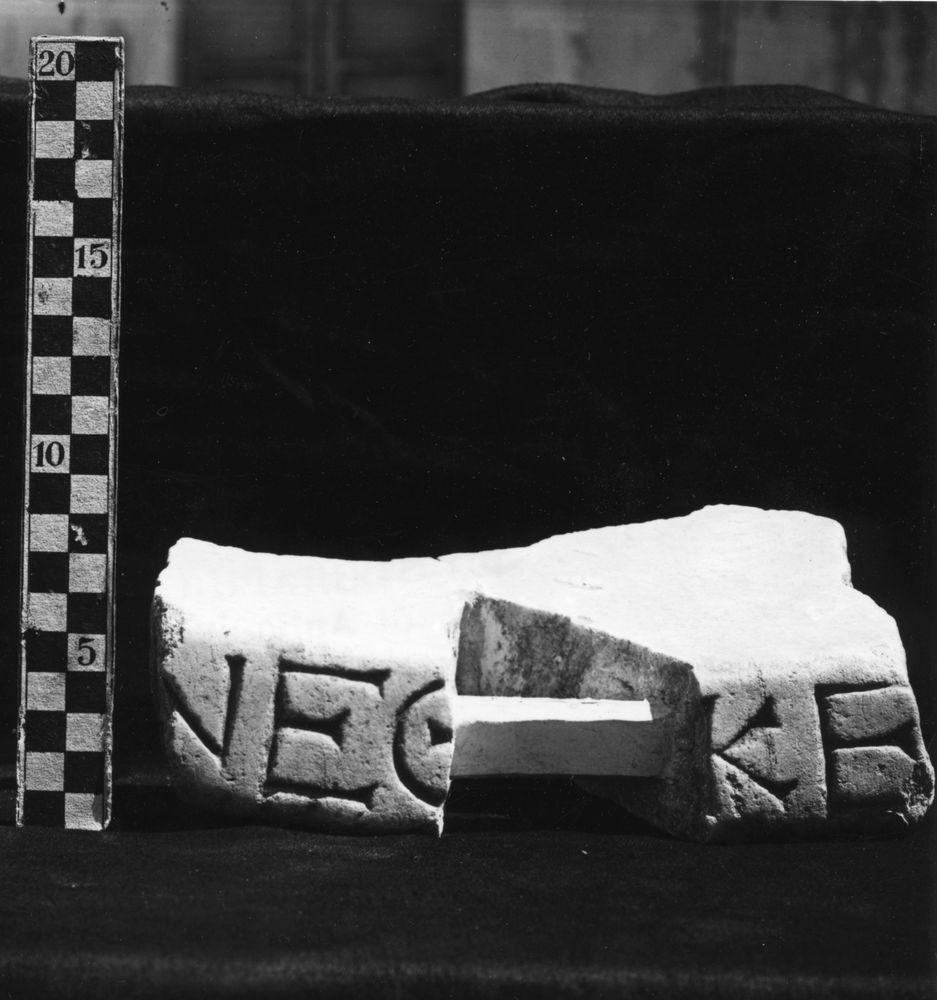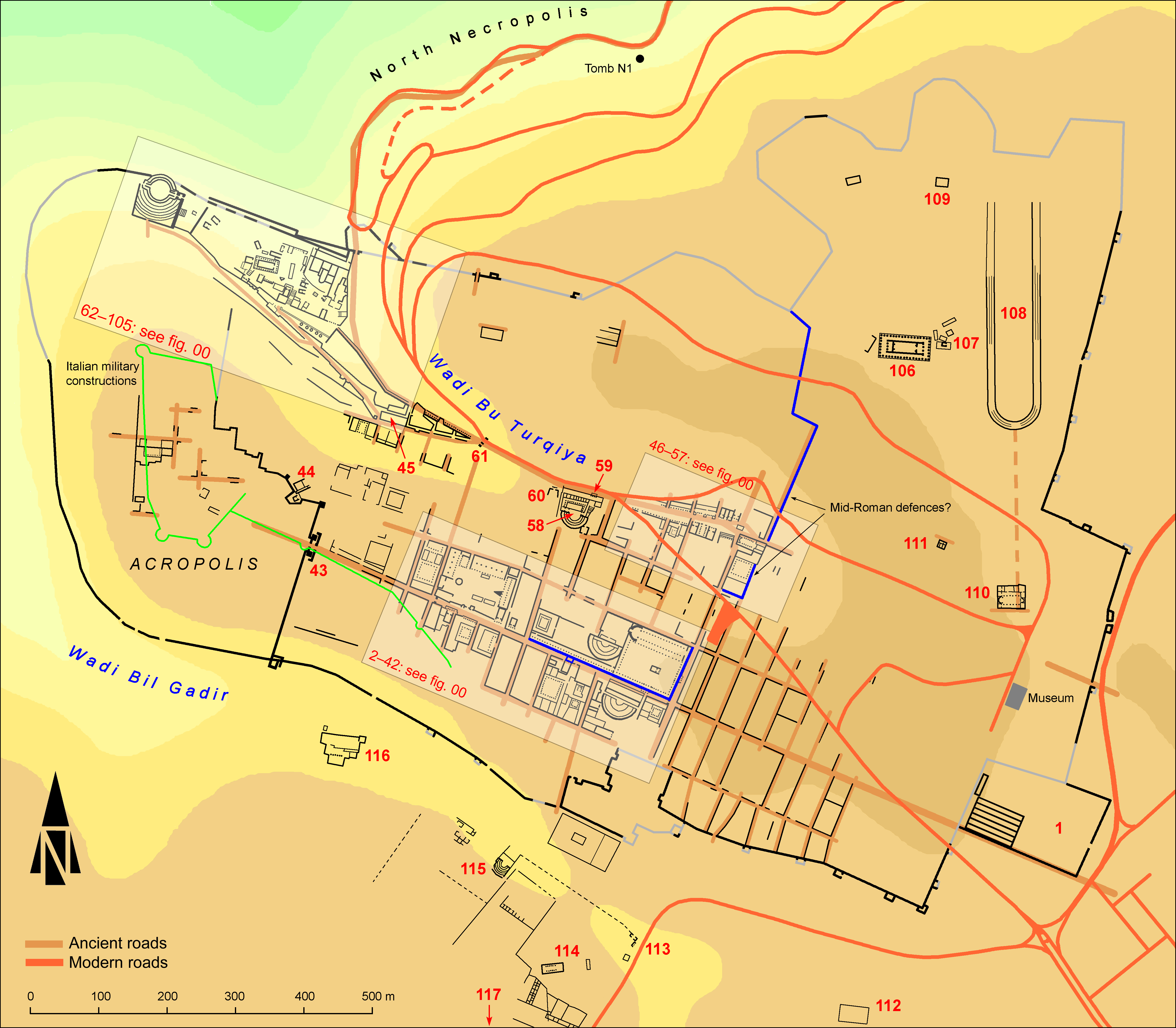EpiDoc XML:
IGCyr1203002
Trismegistos ID:
738752
Source description
Support: Four fragments of a white marble circular basin, of which one paire was adjacent, here described with width and depth: fragment a, broken into two adjacent pieces perhaps after the discovery (w: 0.14 × d: 0.07); fragment b, now lost, known only from a photograph (dimensions unknown); fragment c (w: 0.1 × d: 0.1), photographed with fragment b, with which is was adjacent at rear; fragment d (w: 0.06 × d: 0.09).
Layout: Inscribed on the rim (h: 0.045), to be read from outside.
Letters: 0.03;carefully and regularly cut, with serifs; theta with central short bar, rho with rather small loop.
Date: Probably second century BC (lettering).
Findspot: Found before 1979 at Cyrene ➚: exact findspot unrecorded.
Place of origin: Findspot.
Last recorded location: Cyrene Museum, 102 (fragm. a) + 106 (fragm. c) + 427 (fragm. d). Three of the fragments seen by C.Dobias-Lalou in 1977 and again 1979 in Shahat, Cyrene Museum.
Text constituted from: Transcription from stone (CDL).
Bibliography
Not published before IGCyr 120300 ➚.
Text
French translation
[---] a consacré la [vas?]que [---].
English translation
[---] dedicated the [ba?]sin [---].
Italian translation
[---] ha dedicato la [va?]sca [---].
Arabic translation
[---] أهدى [الح؟] وض [---].
Commentary
A photograph from the Department of Antiquities, plausibly taken before World War II, preserved in J.M. Reynolds' photographic archive, shows fragment b and c already pasted together. However, this restoration did not last and fragment b is now lost (IGCyr1198002 stand on the same photograph).
Fragments a, b and c together bear the usual verb of dedication. The ending ΗΡΑ, preserved before the verb might be intended either as the ending of a father's personal name at the genitive case or as the ending of a noun at the accusative case. For the former hypothesis, although there is no name attested in Cyrenaica with an ending -ηρας, nick-names Πανθηρᾶς or Σπινθηρᾶς are to be found elsewhere. On the other hand, the word λωτήρ (λουτήρ in koine), which means 'washbasin' and was originally used for a water container, is also attested in many a city of Asia Minor for containers of oil for oinment in the gymnasium. This reading seems on the whole more convincing. For another basin referring to the sphere of gymnic activities, see IGCyr1204002. For a possible support of such a basin, see IGCyr0890002.
The place and meaning of fragment d cannot be restored with confidence.
CC BY-NC-SA 4.0 Deed Attribution-NonCommercial-ShareAlike 4.0 International License.
All citation, reuse or distribution of this work must contain a link back to DOI: https://doi.org/10.60760/unibo/igcyrgvcyr2 and the filename (IGCyr000000 or GVCyr000), as well as the year of consultation.



